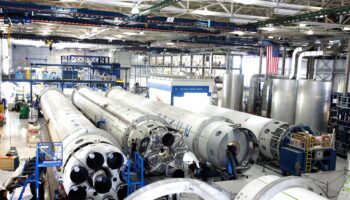In the ever-evolving landscape of technological advancements and societal progress, innovations have taken center stage. As industries and economies strive to remain competitive and adaptable, the need for fostering creativity and collaboration has become paramount. In response to this need, a fascinating trend has emerged in recent years – the rise of innovation villages. These unique spaces serve as incubators for creativity, where diverse minds converge to generate novel ideas, solve complex problems, and drive transformative change.
Defining Innovation Villages
An innovation village sometimes referred an innovation district or Innovation hub, is a physical or virtual space designed to foster innovations, collaboration, and entrepreneurship. These spaces bring individuals from various fields, such as technology, design, business, and academia, creating an environment where different perspectives intersect and ideas can flourish.
The concept goes beyond the traditional notion of a business park or research center. Innovation villages characterized due to their emphasis on serendipitous interactions, open spaces, and a mix of activities that stimulate work and play. They are designed to break down silos and encourage interdisciplinary collaboration, recognizing that some of the most groundbreaking ideas often arise at the intersection of seemingly unrelated disciplines.
Elements of Innovation Villages
Physical Infrastructure:
Innovation villages often feature state-of-the-art facilities, co-working spaces, laboratories, and recreational areas. These spaces are intentionally designed to promote interactions and chance encounters among innovators, providing an atmosphere conducive to idea sharing.
Networking Opportunities:
A key aspect of innovation villages is the opportunity to network with like-minded professionals, entrepreneurs, investors, and mentors. Regular events, workshops, and seminars create platforms for individuals to exchange knowledge and form valuable connections.
Cultural Diversity:
Diversity is a driving force behind innovation. Innovation villages attract individuals from different cultural backgrounds, experiences, and perspectives. This diversity enriches the creative process and contributes to well-rounded solutions.
Start-up Ecosystem:
Many innovation villages provide support for start-ups, offering resources such as funding, mentorship, and access to networks. This ecosystem accelerates the growth of fledgling businesses and enhances their chances of success.
Access to Research and Expertise:
Collaboration with academic institutions is a common feature of innovation villages. It enables access to cutting-edge research, academic expertise, and emerging talent, fostering a symbiotic relationship between academia and industry.
Community Engagement:
Innovation villages often extend their influence beyond physical boundaries by engaging with the local community. By hosting public events, educational programs, and outreach initiatives, these spaces contribute to the socio-economic development of their surroundings.
Success Stories and Impact
Numerous innovation villages have already made their mark on the global stage. For example, Silicon Valley in the United States is perhaps the most iconic innovation village, having played a pivotal role in the advancement of technology and entrepreneurship. Similarly, Station F in Paris and the MaRS Discovery District in Toronto have brought together diverse stakeholders to catalyze in their respective regions.
The impact of innovation villages extends beyond economic growth. By fostering a culture of collaboration, these spaces contribute to job creation, skill development, and the emergence of solutions to pressing societal challenges, such as sustainability and healthcare.
Challenges and Future Prospects
While innovation villages hold great promise, they also face challenges. Ensuring long-term sustainability, maintaining a balance between physical and virtual interactions, and avoiding exclusivity are some hurdles that address.
Looking Ahead, the phenomenon of innovation villages is expected to evolve. Emerging technologies such as artificial intelligence, virtual reality, and blockchain could reshape these spaces Operate. Additionally, as remote work becomes more prevalent, innovation villages might need to adapt to new modes of collaboration and hybrid work environments.
Conclusion
Innovation villages stand dynamic and inspiring ecosystems that celebrate the convergence of creativity and collaboration. As they continue to gain prominence, they have the potential to reshape industries, create new opportunities, and solve complex challenges. By nurturing a culture and embracing diversity, these villages are at the forefront of shaping the future of work, technology, and society at Large.
- THE EVOLUTION OF PLASTIC SURGERY - 17 June 2024
- CHOOSE THE RIGHT PERSONAL INJURY LAW FIRM IN CHARLOTTE NORTH CAROLINA - 16 June 2024
- Email UX optimization, offering actionable insights - 16 June 2024





